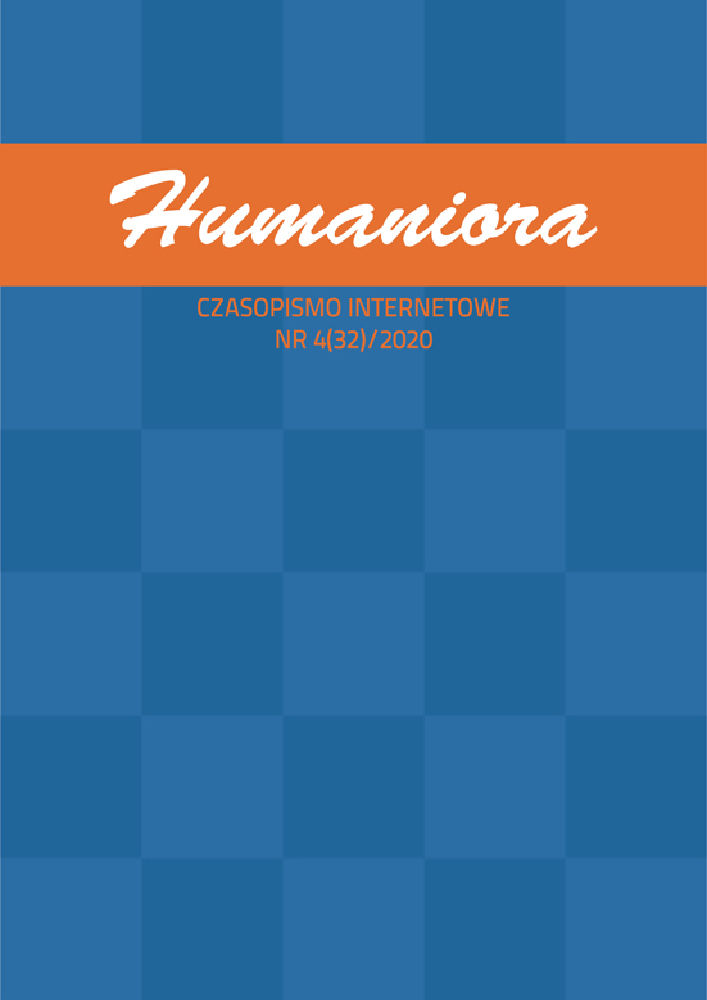Abstrakt
The perspective on terrorism adopted in the paper Visual Culture in the Age of Terrorism is closest to visual studies in the field of cultural studies. Discussions on the topic of visual studies over the last decades have so far resulted in numerous publications and commentaries, but one can have the impression that more than enough they constituted meta-narratives describing research methods rather than implementations of these methods. Meanwhile, research methods appear to be very adequate tools of cultural analysis, in which the component of visual communication is gaining significance. After WWII, it is terrorism and its iconosphere that have prov`en to be the most distinct examples of visual communication. The paper’s aim is to present the images whose source or topic is terrorism and in particular it is about the cultural regimes of production and decoding of these images. The images are culturally framed in line with the iconological tradition, and so the way in which they are interpreted, assigned meaning and studied according to their impact on the field requires some sensitization to cultural contexts, constant consultations between various practices, discourses and disciplines, looking straight ahead and sideways, and sometimes from different perspectives simultaneously.
Bibliografia
Armitstead C., Jones J., Artwork showing Sylvanian Families terrorised by Isis banned from free speech exhibition, https://www.theguardian.com/artanddesign/2015/sep/26/sylvanian-families-isis-freedom-of-expression-exhibition [access: 22.11.2020].
Azoulay A., Civil Imagination: A Political Ontology of Photography, Verso Books, London–New York 2012.
Azoulay A., Different Ways Not to Say Deportation: Unshowable Photographs, Fillip Editions, Vancouver 2012.
Baudrillard J., Duch terroryzmu. Requiem dla Twin Towers, Sic!, Warszawa 2005.
Buchloh B., A Note on Gerhard Richter’s October 18, 1977, “October” 48/1989, https://scholarworks.umass.edu/cgi/viewcontent.cgi?referer=&httpsredir=1&article=1004&context=edge [access: 22.11.2020].
Hannaham J., Disaster areas, https://www.villagevoice.com/2002/07/30/disaster-areas/ [access: 22.11.2020].
http://www.troublesarchive.com/artforms/performance-arts/piece/art-is-not-a-mirror-its-a-fucking-hammer [access: 22.11.2020].
https://www.e-flux.com/announcements/35152/2001-an-installation-by-wolfgang-staehle/ [access: 22.11.2020].
Kanazi R., The Art of Politics, http://www.worldpress.org/Americas/2280.cfm [access: 22.11.2020].
Leave no marks. Enhanced interrogation techniques and the risk of criminality https://phr.org/wp-content/uploads/2007/08/leave-no-marks-1.pdf [access: 22.11.2020].
Morgan H., The Art of Resistance: Interview with Rana Bishara, http://www.artasiapacific.com/Blog/TheArtOfResistanceInterviewWithRanaBishara [access: 22.11.2020] .
Passmore L., Another New Illustrated History: The visual turns in the memory of West German terrorism, “EDGE – A. Graduate Journal for German and Scandinavian Studies” 2009, no. 1(1), article 2, https://scholarworks.umass.edu/cgi/viewcontent.cgi?referer=&httpsredir=1&article=1004&context=edge [access: 22.11.2020].
Roychoudhuri O., Made in Palestine, www.motherjones.com/arts/feature/2005/05/palestinian_art.html [access: 22.11.2020].
Theweleit K., Comments on the Ghost of the RAF, https://www.pismowidok.org/en/archive/2013/2-images-of-terror-visibility-of-history/comments-on-the-ghost-of-the-raf [access: 22.11.2020].
Žižek S., What Rumsfeld Doesnt Know That He Knows About Abu Ghraib, https://inthesetimes.com/article/what-rumsfeld-doesn-know-that-he-knows-about-abu-ghraib [access: 22.11.2020].
Zydorowicz J., Kultura wizualna w dobie terroryzmu, Wydawnictwo Naukowe Wydziału Nauk Społecznych UAM, Poznań 2018.
Licencja
Czasopismo oraz wszystkie zamieszczone w nim materiały są powszechnie dostępne i mogą być wykorzystywane do celów naukowych, edukacyjnych, poznawczych i niekomercyjnych bez konieczności uzyskiwania każdorazowej zgody autorów i redakcji. Nadesłanie artykułu do publikacji traktowane jest jako zgoda autora na udostępnienie swojej pracy i informacji w niej zawartych do powyżej wymienionych celów. W takich przypadkach należy jedynie wskazać źródło, z którego zaczerpnięte zostały informacje. Pobieranie opłat za dostęp do materiałów zawartych w czasopiśmie lub ograniczanie do niego dostępu jest zabronione.
Przesyłane do redakcji teksty muszą stanowić oryginalne prace, uprzednio nigdzie niepublikowane ani nie przedkładane innym redakcjom lub wydawcom. Autorzy nadsyłanych artykułów ponoszą odpowiedzialność za uzyskanie zezwoleń na publikowanie materiałów, do których prawa autorskie są w posiadaniu osób trzecich. Publikacja materiałów chronionych prawem autorskim jest możliwa pod warunkiem uprzedniego dostarczenia przez autora do redakcji pisemnej zgody właściciela praw autorskich.





